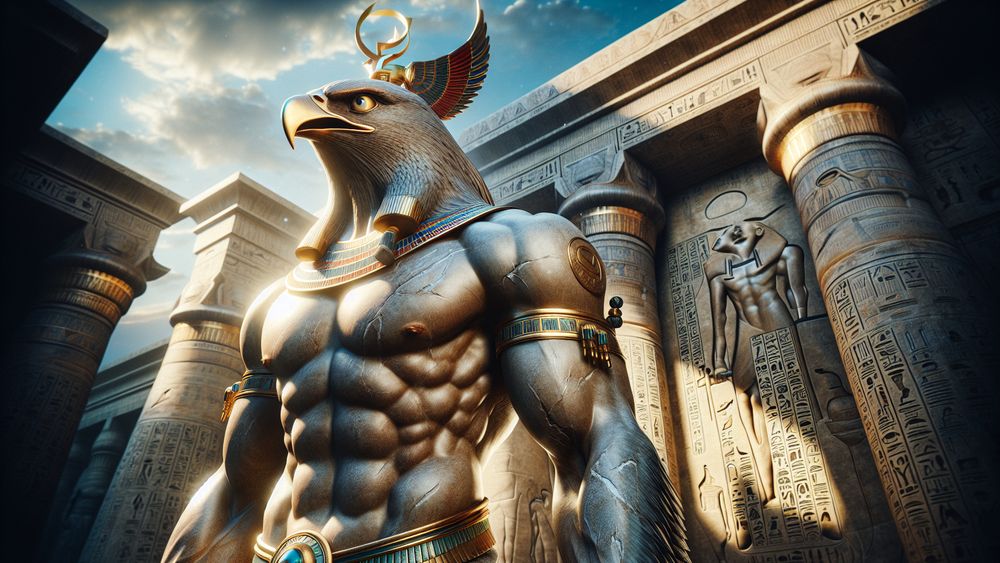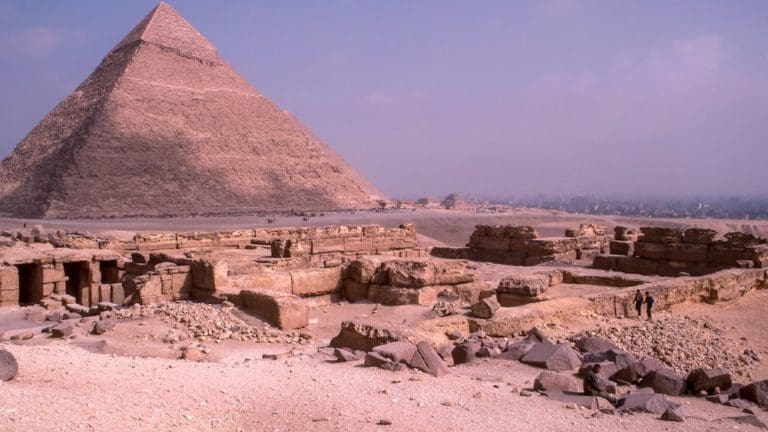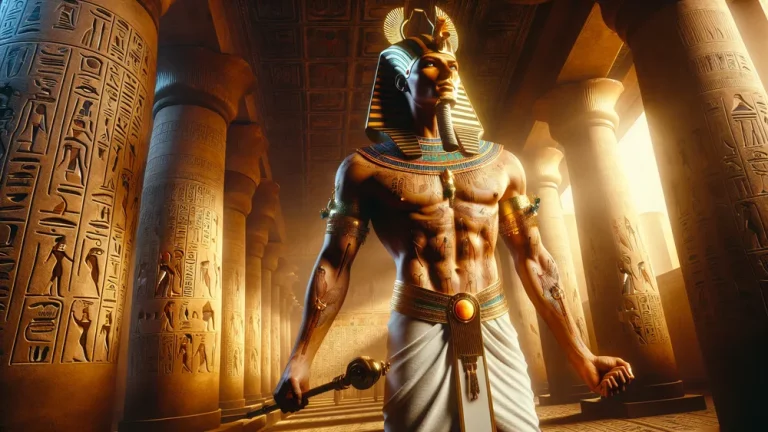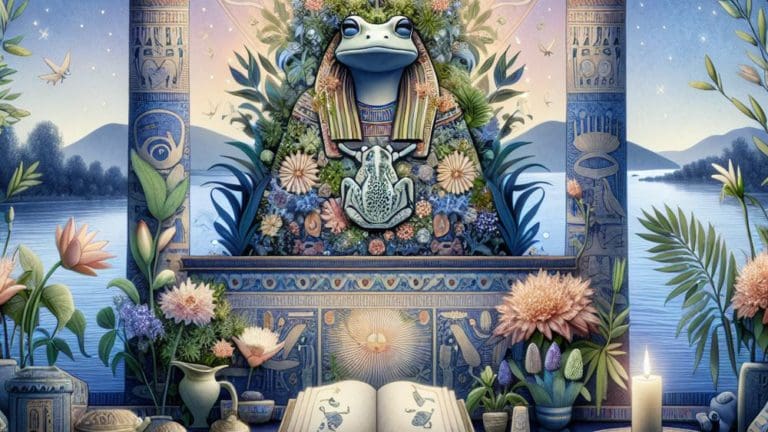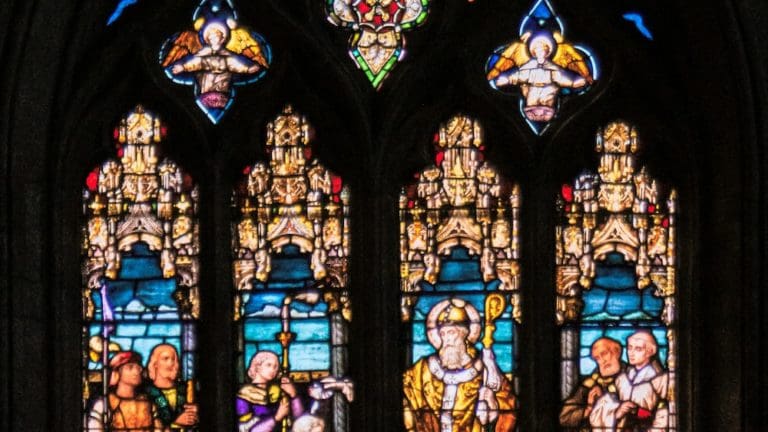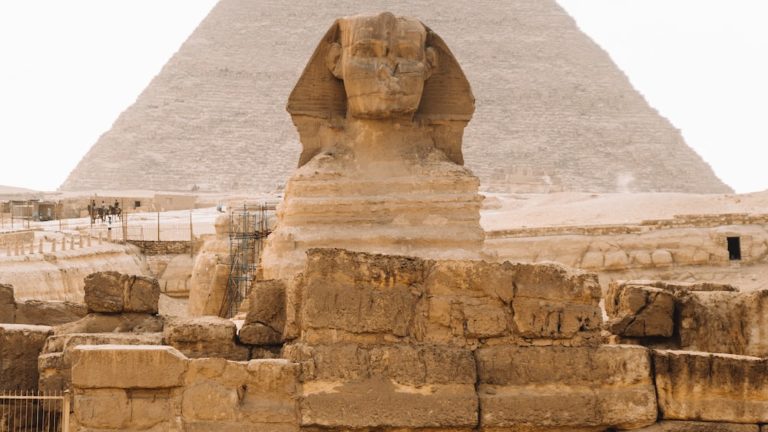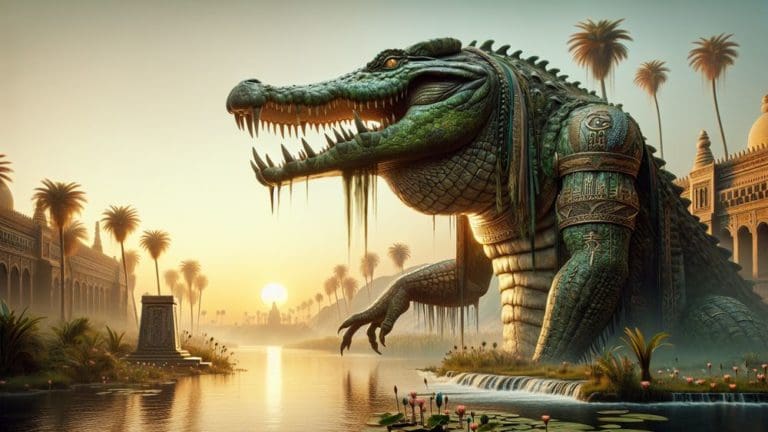Montu: Egyptian God Of War And Vitality
Montu shines as an ancient Egyptian god, mainly because of his strong ties to war and life’s vigor. From the very start of Egypt’s history, which goes way back, people have looked up to Montu. He began as a somewhat local figure in Thebes but didn’t stay that way for long.
Key Points:
- Montu is an ancient Egyptian god of war and vitality, worshipped for his strength and life-giving powers.
- Initially a local deity in Thebes, Montu’s status rose as Thebes gained political power in Egypt.
- Montu was worshipped for victories in battles and connected to creation and the sun.
- Montu’s symbols include the falcon and bull, representing strength and readiness for war.
- Montu’s temples in Armant and Medamud were vital for prayers and everyday life in ancient Egypt.
- Montu’s role evolved from a local war god to a prominent figure in Egyptian mythology, closely linked with Ra and Horus.
- Montu’s legacy is seen in contemporary culture through media and archaeological discoveries which showcase his importance in ancient Egyptian society.
As Thebes climbed the ladder of political power within Egypt, so did Montu’s status. People prayed to him for wins and strength in battles because that’s where he excelled. Yet, he wasn’t all about war. His life-giving side connected him to the sun and the very act of creation.
This god had many sides to him, which really says a lot about the beliefs and practices of those who lived in ancient Egypt. They didn’t stick to one lane; they mixed and matched aspects of warfare, ruling, and nature. Now, after thousands of years, Montu still gives us a clear view into what mattered to ancient Egyptians.
The Origins and Evolution of Montu
To really get where Montu comes from and how his following changed with time, we need to dive into his backstory. It’s key for grasping his role and why he mattered so much.
Who is Montu in Egyptian Mythology?
In the world of Egyptian myths, Montu shines as a god who loves battles and is full of life. This makes him a guardian and a source of power for the people of ancient Egypt. The city of Thebes, which sits in Upper Egypt, is where people first started to really pay attention to Montu.
As Thebes got more and more powerful, so did Montu’s fame and the area where people worshipped him. This growth tied Montu closer to the sun and everything that starts to exist, which added a lively side to his personality that matched well with his fighting spirit. Over time, Montu started to mix with other gods like Ra and Horus.
This mixing made his character richer and gave him more ways to impact his followers’ lives. This change in how people saw and worshipped Montu really shows how flexible and connected Egyptian mythology is, where gods often mix together different parts of life and the natural world.
- People especially loved Montu in Thebes, which turned into Egypt’s main city when it was at the top of its game.
- His favorite symbols are the falcon and the bull, which show off strength and a readiness to fight, which are perfect for a god of war.
- Places built for Montu, especially in Armant and Medamud, were key spots for saying prayers to him and were very important for the religious and everyday lives of ancient Egyptians.
- Besides being all about war, Montu also had ties to making babies and starting new life, which points out how gods in Egyptian stories often have many different roles.
Montu, a prominent god in Egyptian mythology, is known for his love for battles and life, which made him a guardian and power source for ancient Egyptians, especially worshipped in Thebes and connected to other gods like Ra and Horus, demonstrating the flexibility and interconnectedness of Egyptian myths.
Montu’s Symbolism and Iconography
In the world of ancient Egyptian culture, Montu makes his mark through symbols and animals that mirror his powers and influence. Specifically, the falcon and the bull take center stage in his iconography, each shedding light on different sides of his divine character. The falcon, for example, brings to mind qualities like sharp vision and quick movement.
These are key for a war deity, hintingly suggesting that staying alert and moving fast are crucial in combat. On the flip side, the bull brings thoughts of raw strength and life force, which align well with Montu’s role as a vitality god and also tie him to themes of fertility and creation.
These symbols don’t simply sit on the sidelines; they play a major part in how Egyptians interact and think about Montu. They pop up in temple art, on ritual items, and even on personal amulets which are a big part of both religious and everyday life for the ancient Egyptians.
Through these visual cues, Montu’s imagery really digs into the visual and symbolic language of Egyptian culture, making sure his importance and presence are felt in both the daily grind and spiritual moments of the people.
- The falcon often finds itself perched atop Montu’s headgear in various forms of art.
- Temples dedicated to Montu sometimes house bulls that are worshipped, which really puts a spotlight on this animal’s role in his worship.
- Montu is also seen holding weapons quite often, which ties him directly to warfare and fighting skills.
- Aside from animals, Montu gets linked with symbols like the sun disk and two plumes, which connects him to other gods and aspects of the sun.
Montu’s Role and Influence in Ancient Egypt
So, after we’ve dug into where Montu comes from and the symbols that shout his name, we’re heading straight into the core of how this god really left his mark on the lives and battles of those in ancient Egypt. It’s quite the shift, but it’s where we see him shine.
Montu and the Art of War
So, when we talk about how Montu fits into the whole war scene and the way Egyptians fought their battles, it’s quite a story. They really thought Montu was on their side, guiding them to win. When they planned their attacks or defended their land, they did so believing that Montu had their backs.
This belief wasn’t small; it was huge and affected everything from how they arranged their soldiers to the very heart of their battle plans. They even named parts of their army after Montu, which is like saying they’re literally fighting with his power.
And it wasn’t all talk; soldiers and leaders carried symbols and images of Montu, thinking this would make them stronger and braver. Now, the bond between Montu and those kings who led battles was something else. Kings like Thutmose III and Ramses II were almost seen as Montu’s human versions because of how they led their troops and conquered lands.
This wasn’t a light connection. It was heavy and meaningful, making it clear that these rulers were powerful and protected because they were in sync with Montu. This made people see their military and their leaders in a special light, which was exactly what those leaders wanted. It was all about power, protection, and being unbeatable.

Table: How Montu Played a Part in Military Moves and Wins
| Pharaoh | Campaign/Event | Montu’s Role |
|---|---|---|
| Thutmose III | Battle where they beat Megiddo | They called on Montu for a win; they said their smart battle moves were because Montu helped them think them up |
| Ramses II | Big fight at Kadesh | The king was like Montu for his guts and smart planning |
| Amenhotep III | His fights for Egypt | They built places for Montu so he’d make them win in battles |
| Seqenenre Tao | His fight against invaders | They showed respect for Montu hoping he’d help them win |
So, this table lays out where and when they thought Montu was right there with them, helping them out in fights or making sure their kings had the edge. It’s clear that for them, Montu wasn’t a distant figure but a real force in their battles and victories.
Montu’s active role in Egyptian warfare and leadership was a crucial and powerful belief that directly influenced their military strategies and victories, creating a strong connection between the gods and the rulers for ultimate power and protection.
Montu’s Sacred Sites and Temples
In the land that once was ancient Egypt, people gather and pray at several key locations dedicated to Montu. These places are where the heart of worship beats for this deity. The most talked-about spot sits in Armant, which many knew as Hermonthis back in the day. It’s a bit south of Thebes, in the upper part of Egypt.
This location is super crucial because it’s where Montu first got attention and reverence from humans. As time marches on, this temple complex balloons in size and significance, especially when we hit the Middle Kingdom and the New Kingdom eras. That’s when Montu’s fan club really hits its stride.
Another spot that gets a lot of foot traffic for Montu is over in Medamud, which you’ll find northeast of Luxor. This place is famous for its sprawling layout and a sacred lake that’s a big part of the rituals and parties for Montu.
These events often include walking in processions and making offerings to give Montu a nod for his help in war and making sure crops grow. The buildings and writings at these sites spill the beans on how folks worshipped Montu and saw him in their world.
They also shine a light on Montu’s buddy list with other gods and how he fits into the bigger Egyptian god squad. The where of Montu’s temples, near or smack in the middle of major cities, really underpins how much he mattered to people and the central role these holy spots played in both their religious and everyday lives.
Montu’s Connections with Other Egyptian Deities
So, after we’ve dug into Montu’s importance and the places where people honored him, it’s pretty clear. His narrative doesn’t exist in isolation but rather meshes with the stories of other gods and goddesses within the Egyptian pantheon.
Montu and the Egyptian Pantheon
In the grand mix of Egyptian gods and goddesses, Montu finds his spot by linking up with big names like Ra and Horus. He’s all about war and strength, which makes him a perfect buddy for Ra, the sun god. They team up because Montu is like a bodyguard for Ra’s boat when it’s night and they’re moving through the underworld.
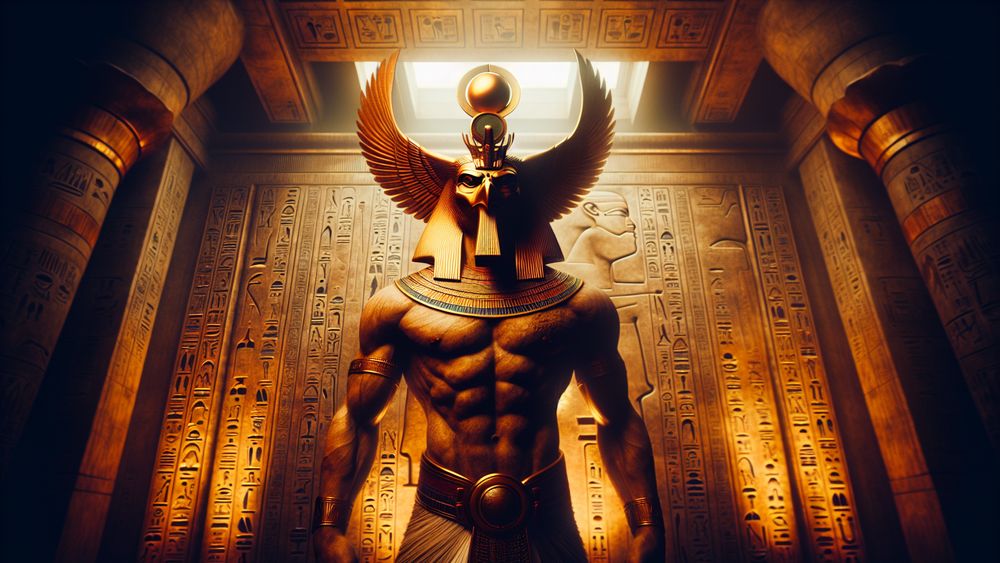
This teamwork boosts Montu’s rep and shines a light on his role as a chaos fighter. Then, there’s his connection with Horus, another god who’s got a falcon head and is no stranger to battle. This link cements Montu’s rep as a top-tier warrior god.
These connections aren’t for show; they knit Montu right into the heart of Egyptian tales and religious practices, where gods often join forces to keep the universe running smoothly.
- Montu and his god pals, especially Ra and Horus, pop up together in temple art and writings, which visually stamps his VIP status in the god squad.
- When it comes to worship and rituals, Montu’s celebrations sometimes blend with those of other deities, especially where he’s a crowd favorite. This mix and match show how flexible Egyptian worship habits can be.
- By hanging out with Ra and Horus, Montu’s job as a war god and guardian gets an extra dose of credibility, which mirrors how Egyptians see war as a tool for keeping peace and order in check.
Montu’s alliances with Ra and Horus elevate his status as a powerful war god, emphasizing the importance of collaboration in maintaining order in Egyptian mythology and religious customs.
The Cult and Worship of Montu
People really got into celebrating Montu, especially where he was a big name, like in Thebes. They did all sorts of things for him, like talking to him through prayers and giving him snacks and drinks. They also threw big parties that showed off how tough and protective he was.
These shindigs happened in special buildings and spots made for Montu which were super important for his fan club and helped everyone feel together and ready for battle. These places weren’t just for hanging out; they were where you went to get serious about asking for Montu’s help before heading off to fight.
Montu’s fan club was a big part of the religion in ancient Egypt because of these fancy buildings for him and because his worship got mixed into the official state religion. This mix showed he was not your average god but a top-tier war and protection deity.
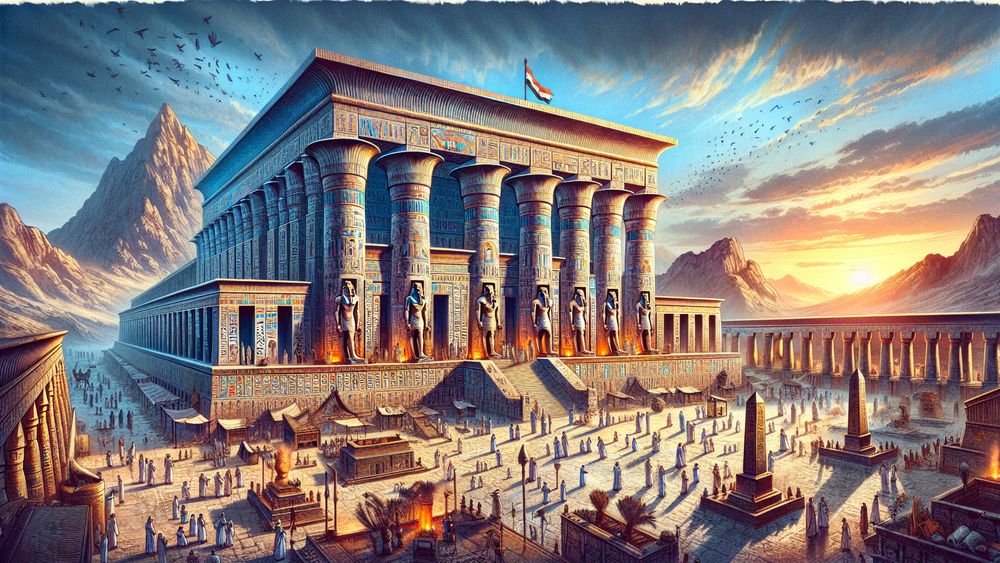
Priests who were all about Montu did their thing every day to keep him happy and to get his thumbs up for the pharaoh’s war plans. This setup where religion and running the country were so tangled up together really says a lot about how people lived and what they thought was super duper important back then.
Pantheon of All the Egyptian Mythology Gods
The world of Egyptian mythology is indeed full and complex. It hosts a wide array of deities, where each one carries their own distinct roles and narratives. From the god who started it all, Amun-Ra, to Osiris, who rules the afterlife, and Isis, who offers protection, this pantheon indeed covers every slice of both life and what comes after.
For those who seek to dive into the depths of these divine entities, they indeed should click on this list of all the Egyptian gods.
FAQs
1. What symbols are most commonly linked to Montu and why?
The falcon and the bull often link to Montu, which directly point to his aspects of war and vitality. These animals, indeed, showcase his strength and aggressive qualities. They do so clearly and without ambiguity. Thus, they serve as perfect symbols for him.
2. How did Montu’s role in Egyptian mythology evolve over time?
Initially, Montu shines as a local deity of warfare. Yet, over time, he climbs the ranks. He becomes tightly knit with Ra, the sun god. Also, he links up with the pharaohs and their battles. This shift is huge. It moves him from a regional figure to a top-tier god in the state religion.
3. Can you visit any temples dedicated to Montu today?
Yes, indeed, you have the option to visit temples that honor Montu in the present day. Specifically, the temple complex located in Medamud draws attention as a key site for his adoration.
4. How is Montu represented in modern culture and media?
In today’s world, Montu makes appearances. He does so mainly in video games and books. Here, creators often show him as a god full of power and focused on warfare. They do this while keeping it simple for everyone to understand. Thus, he steps into our current era. He brings with him tales of strength and battle prowess.
And indeed, this keeps the conversation going. It educates and entertains. So, we see him. We learn from him. And we keep the legacy alive.

